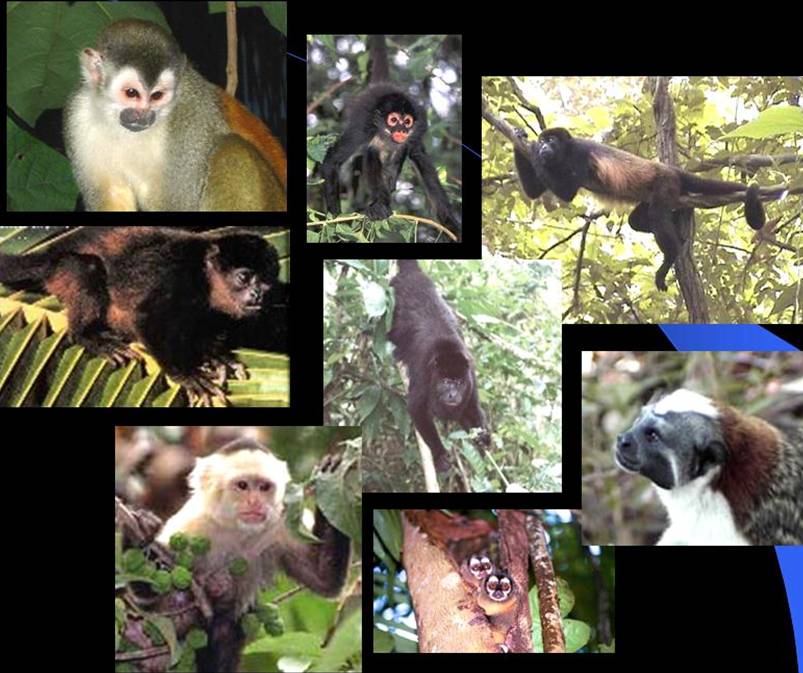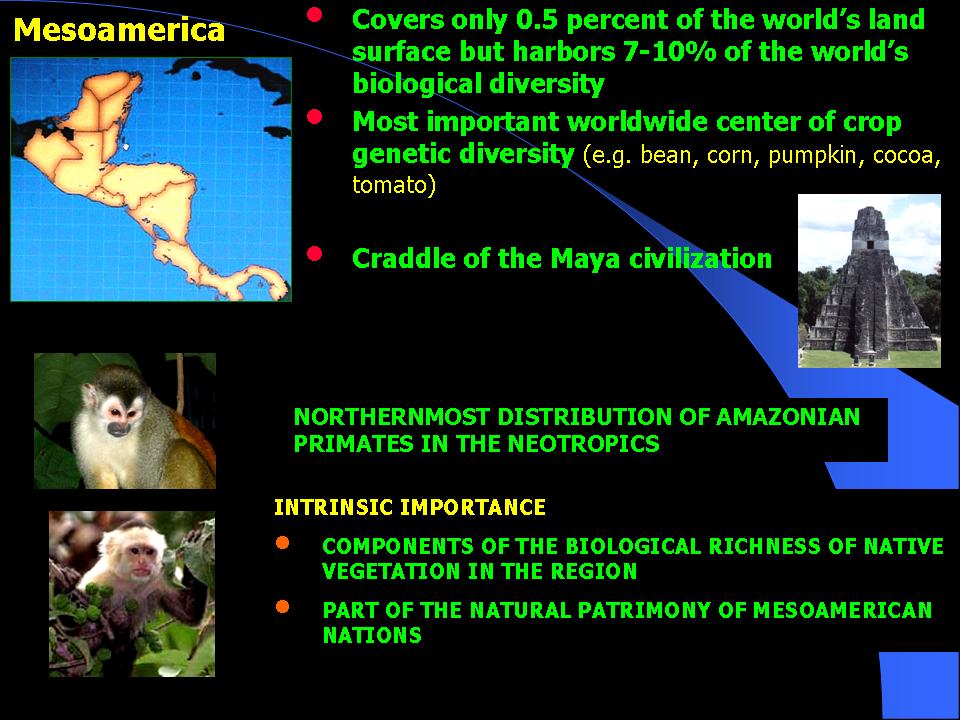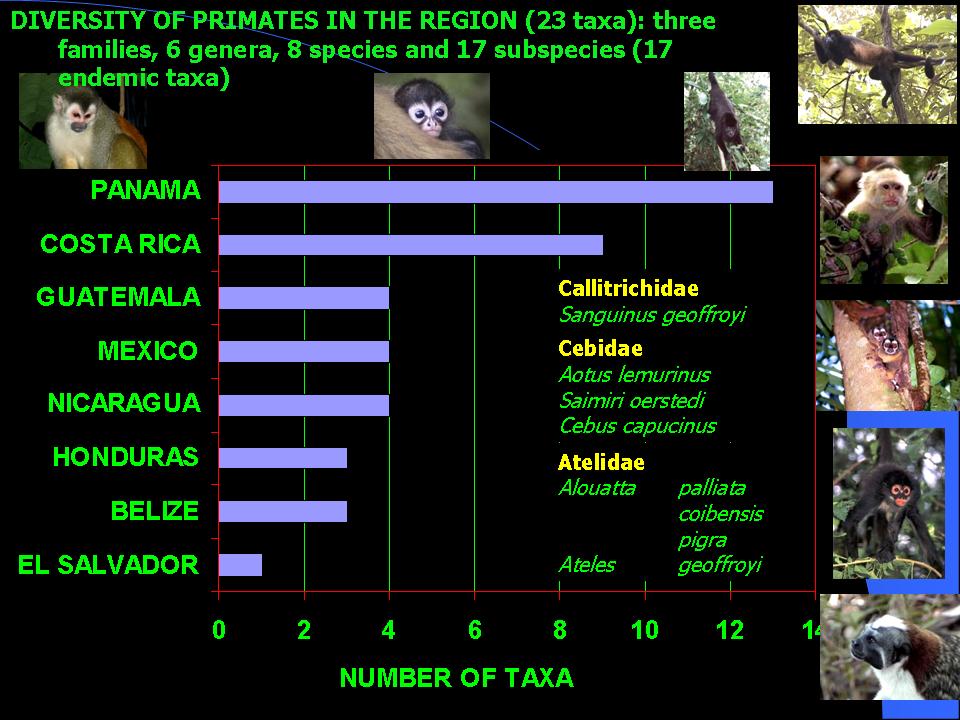PRIMATES MESOAMERICANOS –
SIMPOSIO
Meetings of the American Society of
Primatologists
June 2-8, 2004

| MESOAMERICAN
PRIMATES - SYMPOSIUM PRIMATES MESOAMERICANOS –
SIMPOSIO Meetings of the American Society of
Primatologists June 2-8, 2004 |
|
|
Celebrated during the meeting of the
American Society of Primatologists, June 8-12, 2004, at
the -------------------------------------------------- Celebrado como parte del congreso
anaul de la American Society of Primatologists, del 8-12
Junio, 2004, en la Universidad de Wisconsin, Madison,
Wisconsin, USA Organizers/Organizadores: Alejandro Estrada
(UNAM-Mexico) Paul Garber (University of
Illinois-Urbana) Mary Pavelka ( |
|
|
| Publication
of most papers presented in the symposium, as well as
contributions by other invited primatologists, appeared
in the book listed below NEW PERSPECTIVES IN THE STUDY OF
MESOAMERICAN PRIMATES: DISTRIBUTION, ECOLOGY, BEHAVIOR
AND CONSERVATION. A. Estrada, P. Garber, M. Pavelka,
L. Luecke (Eds.). Springer, |
|
Key features of Mesoamérica as a
biologically important region of the World, and as a
reservoir of the northernmost representatives of the
Order Primates in the American continent Aspectos clave a considerar para el
area Mesoamericana, una región biológicamente
importante en el planeta. La región resguarda la
representación mas septentrional del Orden Primates en
el continente Americano |
 |
 |
Primate species diversity in Richness of primate taxa is
associated to latitude with the southern areas of
Mesoamerican ( --------------------------------------- La diversidad de especies primates
en la región consiste en 23 taxones, de los cuales 17
son endémicos. Los taxones existentes representan a tres
familias, a seis géneros. y a ocho especies. La riqueza de especies primates en
la región esta asociada al gradiente latitudinal, con la
porción sur (Costa Rica y Panamá) alojando el mayor
número de estas. |
| Primate
studies in Mesoamerica have a long and
important history in
|
Los puntos verdes muestran las
localidades en donde poblaciones de primates fueron
estudiadas en las fases tempranas de la Primatologia
Mesoamericana. Estos sitios aun siguen bajo estudio. Los
puntos amarillos muestran sitios de estudio de reciente
establecimiento. |
Los
estudios de primates silvestres de Mesoamérica tienen una larga
historia, comenzando con las investigaciones de C. R. Carpenter
sobre la conducta de monos aulladores en la isla de Barro
Colorado en Panamá en los 1930s. Este fue el primer estudio de
campo con primates en el mundo y por consiguiente representa el
nacimiento de Primatología. Una serie de estudios consecutivos
en la isla añadieron información sobre los monos aulladores y
sobre los otros primates (Cebus, Ateles y Aotus) en este
sitio. Así mismo, estos estudios dieron la pauta para que otros
se desarrollaran en otros sitios en Panamá, Costa Rica, Tikal en
Guatemala y Los Tuxtlas en México. Estos esfuerzos acumularon
nueva información sobre Alouatta palliata y sobre otras
especies como Sanguinus geoffroyi, Saimiri Oerstedii, Cebus
capucinus, Ateles geoffroyi y Alouatta pigra. Más
recientemente estudios de campo se han desarrollado en la isla de
Ometepe en Nicaragua, en Pico Bonito, Honduras, en El Salvador y
Belice, y en varias localidades en el sur de México y el norte
de Guatemala. A pesar de estos esfuerzos, aun existen grandes
vacíos de información sobre las poblaciones de primates para
diferentes áreas geográficas en Mesoamérica, por lo que deben
dirigirse esfuerzos de investigación en estas para documentar
las especies involucradas, su ecología, comportamiento y
problemas de conservación.
| The
series of photographs to the right are of the great
pioneer Mesoamerican primatologists, whose efforts during
many decades of work have had a keystone effect on the
development of primate research in These researchers together with the
many students they have trained, have produced a large
volume of biological information about the primates of ---------------------------------------------- Las fotos a la derecha muestran a
los pioneros de la Primatología Mesoamericana, cuyo
trabajo a través de varias décadas ha sido medular en
el desarrollo de investigaciones con primates en la
región y en otras partes del mundo. ----------------------------------------------- From left to right / de izq a
der: |
|
Contributions in this symposium
attempted to integrate and bring to light new
information on primate biology, behavior, ecology and
conservation for the Mesoamerican region. We envision a new perspective in
which primate research and conservation in
|
|
<hr
Return to Main Page / Regreso a Pagina
Principal